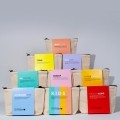What’s trending in beauty product packaging?
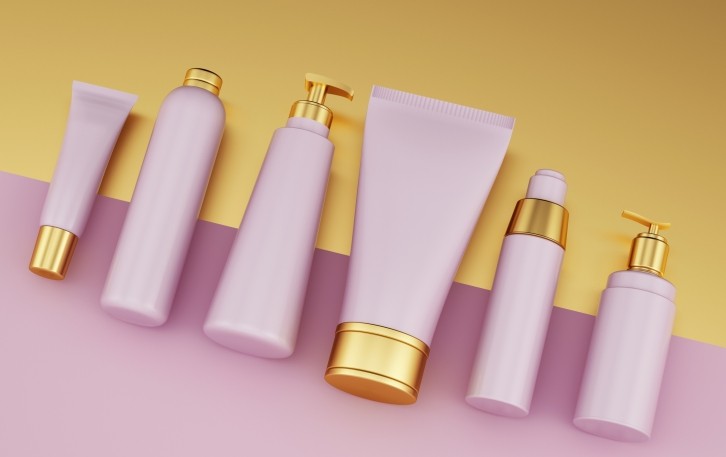
Packaging can make or break the success of a beauty and personal care product, particularly as more consumers use highly visual platforms like TikTok for discoverability.
We spoke to Jessica Parr, director at Space Doctors – a global creative consultancy that has worked with some of the world’s biggest beauty businesses, including Coty, J&J, L’Oréal, and Givaudan – to learn more about what she has seen in 2024 and what she anticipates will happen next in terms of beauty product packaging…
Cosmetics Design-Europe (CDE): What kind of trends are you spotting in beauty and personal care product packaging in 2024?
Jessica Parr (JP): There are multiple packaging trends existing, but two stand out as most relevant to 2024.
The first is about flavour and edibility, with vibrant, fresh colours and fruity themes cueing sensorial irresistibility. These products connect a younger audience (typically Gen Z or Gen Alpha), and encourage consumers to interact, touch and smell products that look good enough to eat – take the bendable curves coupled with the gooey texture of Gisou, for example, or P. Louise’s lip balms and bronzers, which look like desserts.
The other finds its place on the more utilitarian end of the scale. Think of the likes of Jones Road, with its monochromatic packaging, to communicate simplicity and strength or Simihaze’s chunky packaging that appears almost marble-esque.
These brands are prioritising function and minimalism in their approaches to packaging, connecting with on-the-go consumers who do not have the time (or patience) to carry around multiple, flimsy products in their bags, and often have a 3-in-1 benefit.
CDE: What do you think is coming next?
JP: Over the past 10 years, there has been an increasing interest in the science behind beauty and skin care, and people are only becoming more conscious of the specific ingredients within the products they use. But with attention spans already stretched, and information overload nearing its peak for many online, brands will need to find the balance between educating their consumers and overwhelming them.
This will mean more packaging that feels clean, succinct, and minimal but, most importantly, truthful.
CDE: How has the popularity of platforms like TikTok for consumer product discovery influenced the look of beauty and personal care products in recent years?
JP: I’m sure it will come as no surprise that virality is a key influence here. Post-pandemic, we’ve experienced a serious push for identity creation and individuality through self-expression, and beauty plays a massive role in this.
Products go viral not only because people think they need them, but because they look good and connect with what’s happening right now in culture. Take the Made by Mitchell Blursh, for example; the product hits these criteria, with its bold vivid colours, catchy name, and multipurpose functions (blusher and lip balm).
Purchasing decisions are now, more than ever, a statement of identity. So, brands understanding the identity they want to create, or participate in, is crucial when appealing to consumers in a TikTok world.
CDE: Have you seen any other noticeable changes in client demands for beauty product packaging in recent years? If so, what have you seen, and why did this happen?
JP: Sustainability in packaging is a huge conversation, especially as Gen Z get older and the pressure on brands to be responsible and transparent increases.
We’re seeing brands like Half Magic do this very well, with its fully compostable Cheek Fluff compacts. It is also looking to promote behaviour change in consumers by offering discounts on future purchases when participating in its mail-back program.
Brands will need to continue to look for creative ways to not only make themselves more sustainable, but to influence wider shifts in their consumers behaviour to help bring people on this journey,
CDE: How are beauty brands changing the way we feel, and not just the way we look?
JP: I would argue that it’s not actually the brands that change the way we feel, but cultural world that the brands exist within. The online beauty community is one that can be very empathetic and validating, where people share hacks, advice, and feedback, so brands who add to the conversation, and carefully navigate in this world can feel much more valuable to modern audiences, than a one-way dialogue from the brand itself.
However, we’ve seen a significant shift towards emotional benefits claims on pack. With mental health conversations becoming much more open and honest, community-led messaging is coming to the fore. Take L’Oréal’s brand mission changing from a more individual “You’re Worth It” to a "We're Worth It', that aims to welcome us into a global community on the journey of personal care.
CDE: How do sensorial cues play a part in this collective change?
JP: If Pat McGrath’s viral 'porcelain skin' taught us anything, it’s that people care deeply about how a product looks, smells, and feels on skin. These unique and unexpected sensorial details can elevate the products desirability, and ‘virability’, as they tap into our primal desire and sensorial crave to interact and touch. From wanting to poke your finger into a pristine makeup palette, to having foundation spilling all over the bottle in ads, like Fenty Beauty has, there is something instinctively therapeutic and satisfyingly pleasurable in sensorial products.


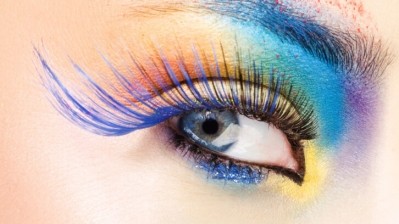
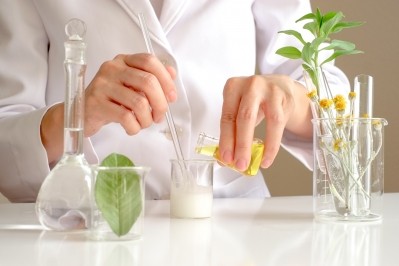






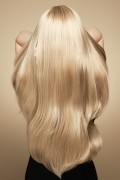



![Melvita is rolling out a brand new look with revamped stores and communications in APAC. [Melvita]](/var/wrbm_gb_food_pharma/storage/images/_aliases/wrbm_tiny/publications/cosmetics/cosmeticsdesign-asia.com/headlines/brand-innovation/melvita-debuts-new-look-upgraded-stores-for-apac/17518501-1-eng-GB/Melvita-debuts-new-look-upgraded-stores-for-APAC.jpg)




